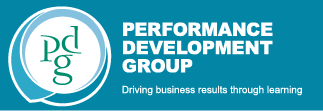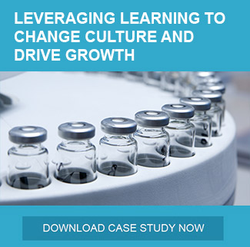There’s no denying that changes in the world economy are having an effect on every industry. And the Life Sciences industry is feeling the effect like everybody else. As budgets for learning and development get battered from all sides, the savviest Life Sciences learning organizations have realized a simple truth: it isn’t about doing more with less, it’s about fundamentally rethinking the way learning and development gets done.
Stott & Mesch, 2015
PDG’s Ann Stott and Rich Mesch recently published an article in Focus Magazine, the journal of the Life Sciences Training & Educators Network. Titled Learning in Changing Times: 5 Trends in Life Sciences Learning, the article focuses on how changes in the Life Sciences industry are changing the requirements of an effective learning function. The learning trends covered include:
-
A Return to Shared Services
-
Demand Planning and Flexible Learning Resources
-
Building Long-Term Sales Team Success
-
Increased Focus on Informal Learning
Click here to read the article for free online. For more insight into the changing world of Life Sciences learning, read Ann Stott’s series on The Changing Face of Life Science Product Launch:
The Changing Face of Life Science Product Launch
The Changing Face of Life Science Product Launch, Part 2: The Launch Toolkit
The Changing Face of Life Science Product Launch, Part 3: The Role of the Learning Team

Ann Stott is the Vice President, Global Accounts at Performance Development Group. She leads the life sciences practices, focusing on pharmaceuticals, health care, biotechnology, and medical devices. Her extensive consulting experience is used to grow the PDG advisory services capabilities. Ann is an accomplished, respected, and energetic leader with more than twenty years of experience in the corporate training environment.

Rich Mesch is Vice President, Customer Engagement at Performance Development Group. A frequent contributor to industry events and publications, his most recent article was Taming the Learning Demand Curve: Using Supply Chain Methods to Manage Your Learning Function for Training Industry's online magazine.



 AS: What we have started to see from our clients are requests for Launch Toolkits. A launch toolkit puts a step by step process in place for product launches. This gives consistency to the product launch process. You can use the Launch Toolkit to capture a history of product launches so that the process is in place for new employees to the department.
AS: What we have started to see from our clients are requests for Launch Toolkits. A launch toolkit puts a step by step process in place for product launches. This gives consistency to the product launch process. You can use the Launch Toolkit to capture a history of product launches so that the process is in place for new employees to the department.  Q: What is important to keep in mind when developing product launches?
Q: What is important to keep in mind when developing product launches?

 Ann Stott: It is beneficial to take a portfolio view, looking at all product launches over a three-year period. Not only do you create a launch plan for each product but you create an overall launch portfolio plan for all of your products. A launch portfolio plan helps to optimize your events and balances activities across all launches. It helps to maximize messages to your audiences and minimizes the time your sales representatives have out of the field. Launch portfolio optimization helps ensure adequate funding, supports a better commercial strategy, and can help get launch events to market more quickly.
Ann Stott: It is beneficial to take a portfolio view, looking at all product launches over a three-year period. Not only do you create a launch plan for each product but you create an overall launch portfolio plan for all of your products. A launch portfolio plan helps to optimize your events and balances activities across all launches. It helps to maximize messages to your audiences and minimizes the time your sales representatives have out of the field. Launch portfolio optimization helps ensure adequate funding, supports a better commercial strategy, and can help get launch events to market more quickly. Another way to combat knowledge loss is to develop a Launch University. The Launch University can be a one-day meeting or a virtual meeting. It is a time where you bring people together who have done product launches within the past three to four years. The Launch University is a venue to discuss what went well what didn’t go well and get the expertise of lessons learned from previous launches. You can pull that knowledge from employees who have moved on to other positions in the organization. Experience is the best teacher, but that information needs to be shared to make a difference!
Another way to combat knowledge loss is to develop a Launch University. The Launch University can be a one-day meeting or a virtual meeting. It is a time where you bring people together who have done product launches within the past three to four years. The Launch University is a venue to discuss what went well what didn’t go well and get the expertise of lessons learned from previous launches. You can pull that knowledge from employees who have moved on to other positions in the organization. Experience is the best teacher, but that information needs to be shared to make a difference!
 Q: What has changed in producing Life Science product launches?
Q: What has changed in producing Life Science product launches? 

